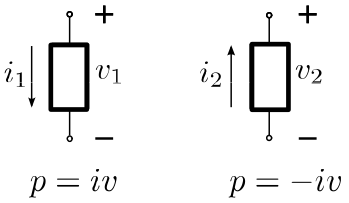Electricity is all about the movement of electrons. Electrons are part of atoms. Electrons move around the nucleus of the atom.
The simplistic model of the atom shows electrons moving around the nucleus like satellites move around a planet. That’s not entirely accurate. More sophisticated models show the electron inhabiting a sphere around the nucleus. They can suddenly show up at any point within this sphere from any other point within the sphere. This is not entirely accurate, but it is close enough for our purposes.
A chemist/physicist would say that that the electron inhabits an orbital around the nucleus, and that an orbital is not an orbit. That’s really important to them and it is accurate. See http://www.chemguide.co.uk/atoms/properties/orbitsorbitals.html if this interests you.
We’re going to think of electrons as living in a sphere around the nucleus, and generally hanging out on the outside edge of the sphere. If you like, you can think of the sphere defined by a satellite in a polar orbit around the Earth as being similar to this sphere.
Atoms have concentric spheres called energy levels. Electrons live in an energy level. Sometimes they move between energy levels, but mostly they don’t. Electrons in the outermost energy level, are somewhat loosely attached to their nucleus.
When you see a diagram of an atom, they usually show it like a little solar system. That’s OK, except you should remember that they’ve taken a 2-dimensional slice of something that’s 3D, and that instead of moving around in circles, electrons move around in spheres, and that they can suddenly move from one point in the sphere to another point, without any warning. Again, not entirely accurate from a physics standpoint, but close enough for our purposes.
If you look at a (diagram of a copper atom](http://en.wikipedia.org/wiki/Copper), you’ll see that it has 4 energy levels. The outermost energy level has a single electron in it. It turns out that this electron is pretty loosely attached to its copper atom. A copper atom is “willing” to give up this electron.
If you put a bunch of copper atoms in a line (as in a copper wire), and you push an extra electron onto the atom at one end of the wire, the original single electron will “feel crowded” and tend to move over to the next atom. (Or maybe it will be the new electron that will move over to the next electron. Electrons are somewhat flighty things.) The second atom will now have an excess of electrons, so one of them will “feel crowded” into moving to an adjacent atom.
If you keep pushing electrons into one end of a copper wire, electrons will keep coming out of the other end of the wire (if you let them). This is called “conducting” electricity. Copper is a conductor.
The periodic table groups atoms by the number of electrons they normally have. (Again, not entirely accurate from a physics standpoint, but close enough for our purposes.) You’ll notice that copper, silver, and gold all have a single electron in the outermost energy level. They’re all good conductors of electricity. They’re all “willing” to let their electrons get pushed from one end of a wire to another.
Atoms in other columns of the periodic table have different numbers of electrons in their outermost shell, and different numbers of shells. Some of them are very, very “unwilling” to let their electrons get pushed around. Materials that don’t conduct are called “insulators.”
I like to think of wires as being like a garden hose filled with marbles. The marbles are the electrons. If you push a marble into one end, another marble pops out of the other end. Again, not entirely accurate from a physics standpoint, but close enough for our purposes.
If you put a measuring device at one end of the hose, capping the end of the hose, and you push a marble into the other end, the scale at the closed end would measure how hard (with how much pressure) you’re pushing the new marble into the other end. We call this pressure “voltage” when the marble is an electron in a wire. Notice that we could push gently or push really hard, without the marbles actually going anywhere. The measuring device just measures how hard we’re pushing.
Suppose we take the measuring device away, and you stand at that end of the hose and count the marbles as they come out. If I put marbles into the other end slowly, they come out your end slowly. If I put marbles in fast, they come out fast. We call this speed “current” when the marble is an electron in a wire. Notice that we don’t care about how hard I pushed the marble into the hose – just the speed at which I push them in. Speed is different than pressure. Current is different than voltage.


